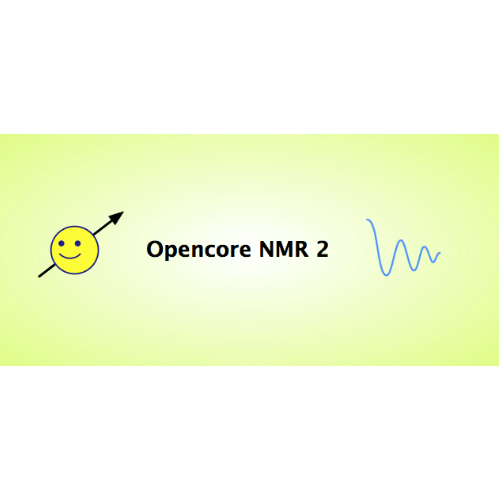Application
Open source kit for implementing an integrated FPGA-based NMR spectrometer
Contributors
Kazuyuki Takeda1
Contact
takezo@kuchem.kyoto-u.ac.jp
Estimated cost
ca. 5000€
Progress
Stable release
software version 2.0.0 (3), hardware version v.0.0.1-v.0.0.3
GPL License
OPENCORE NMR is an open-source toolkit for implementing an NMR spectrometer. This console has the size of a laptop computer, making it easy to transport. The cost of its parts is very low compared to the prize of commercial systems. This integrated system has 3 radio frequency transmitting channels capable of operating at up to 600 MHz (14 T). It has been successfully combined with high-temperature superconducting magnets, as well as with a portable 1T permanent magnet. The toolkit comes with a multiplatform graphical user interface software to run the spectrometer.
Its key feature is that a single Field-Programmable Gate-Array (FPGA) chip does most digital jobs of the spectrometer. It allows building digital hardware modules, called core modules, by writing a software code in VHDL language. The FPGA is responsible for the pulse sequence controls, the digital part of DDS, the quadrature demodulation, filtering, and PC communication. The FPGA chip is complemented with several peripheral boards for USB communication, direct-digital synthesis (DDS), RF transmission and signal acquisition. Resources necessary for reproducing the FPGA-based NMR spectrometer are publicly available. They include source code of the modules, circuit diagrams, board drawings, control software, and technical documents
The OpenCore NMR spectrometer has not been designed to compete against commercial systems, but to complement them by being a test-bench for concepts that may require strong hardware modifications. Nevertheless, its performance can be as high as that of commercial systems. Some of the projects developed with the Opencore NMR spectrometer include: Magic-angle adjustment with X0-shimming, dynamic receiver-gain modulation, paramagnetic shimming, hetero-nuclear covariance spectroscopy employing a dual-receiver system, and Double-resonance Magic Angle Coil Spinning. The spectrometer has also been complemented with a field-gradient waveform generator to acquire 3D NMR images (MRI).
The OPENCORE NMR spectrometer facilitates setting up a system for non-conventional NMR experiments within a reduced development time. This work can promote novel and exciting NMR experiments by lowering the barrier for building a handmade NMR spectrometer.
Publications
References
Affiliations:
1Division of Chemistry, Graduate School of Science, Kyoto University, Kyoto, Japan


